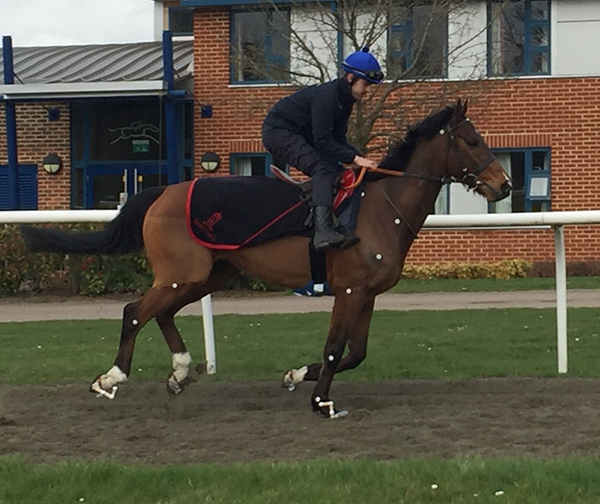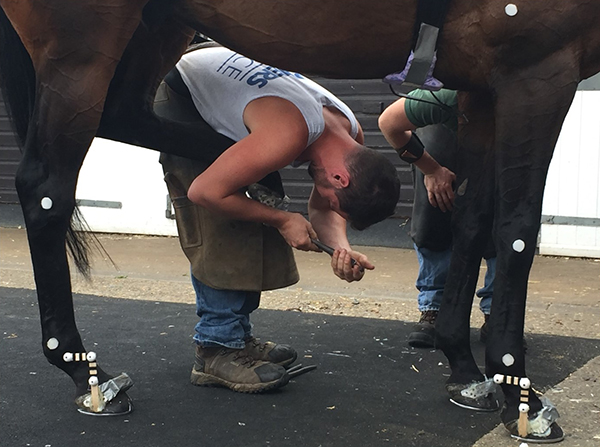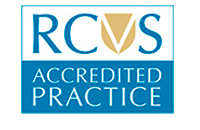24 hour contact: 01707 666297
New RVC study reveals the impact of farriery interventions on galloping racehorses’ hoof biomechanics
A new study, led by the Royal Veterinary College, and funded by the Horserace Betting Levy Board, has shed light on the influence of horseshoe and surface conditions on racehorses’ hoof movements. This has implications for how racehorses’ athletic performance and safety can best be supported, both in training and on the racetrack. The findings of this research will be an important step towards helping both the racing industry and farriers understand how different shoeing practices impact horses’ movements during high-speed locomotion on different surfaces.

Conducting this study, a team of researchers, led by Dr Kate Horan, a Postdoctoral Research Scientist at the RVC, assessed the effect of eight horseshoe-surface combinations on hoof acceleration patterns in 13 retired Thoroughbred racehorses. Hoof accelerations were measured using accelerometers, mounted to the dorsal hoof wall, as the horses trialled aluminium, barefoot, GluShu (an aluminium-rubber composite shoe) and steel shoeing conditions at gallop on turf and artificial surfaces. Linear mixed models were then used to determine whether surface, shoeing condition or stride time influenced maximum or minimum accelerations at hoof landing and during the push-off stage of the horses’ stride cycles.
Published in Animals, the research found that during hoof landing, accelerations were increased for the hindlimbs and leading limbs. They were also elevated by 1.2 to 2.4 times across limbs on the turf surface compared to the artificial surface. It was also found that barefoot hooves experienced the lowest impact accelerations and that impact accelerations were increased as speed increased (or stride time decreased).
The findings also revealed that during the propulsive stage of a stride, accelerations recorded as the hooves pushed off from the ground surface were increased for low stride times, particularly in the hindlimbs. Accelerations were also increased on the artificial track during hoof push-off.
Importantly, the researchers suggested that increased impact accelerations on turf and in shod conditions could be detrimental to horses’ health and have implications for musculoskeletal injuries. However, increased push-off accelerations on the artificial surface compared to the turf track may indicate that this surface returns more energy to the hoof, aiding propulsion and potentially conferring a performance benefit.

Kate Horan, Postdoctoral Research Scientist at the RVC, and lead researcher on this paper, said:
“This exciting study has demonstrated that patterns of hoof landing and push-off in galloping racehorses’ are affected by horseshoe and surface conditions.
“In contrast to other equestrian disciplines, the shoes permitted for racing Thoroughbreds are currently tightly controlled in the UK by the British Horseracing Authority. In this study, we sought to explore the effect of both current and novel shoeing options on hoof-ground interactions using retired racehorses galloping on turf and artificial training tracks. This work was a collaborative effort involving James Coburn’s farriery team and staff and horses from the British Racing School.
“We hope that the findings from this research will equip the racing industry with new knowledge to inform their decision-making regarding horseshoes and surfaces and ultimately improve both the performance and safety of our racing equine athletes.”
Professor Thilo Pfau, Principal Investigator on the project and now a Professor in the Faculty of Kinesiology and Faculty of Veterinary Medicine at the University of Calgary, and Visiting Associate Professor at the RVC, said:
"This project was a fantastic team effort with farriers, jockeys and scientists collaborating in an applied study addressing questions around shoeing and surfaces in Thoroughbred racehorses. Making use of state-of-the-art sensor technology, the rapid changes in movement experienced by the hooves on impact and during the push off phase have been documented for different shoeing conditions. The findings of this research provide important groundwork for future studies investigating shoeing related questions in the context of injury prevention."
Henry Carnall, a farrier who was also part of the research team, said:
“As a farrier, this study offered interesting insight into how modern sensor technology can provide evidence about how our shoeing practices influence hoof biomechanics when horses work at high speeds."
GluShu_Kate%20Horan.png)
Although further research is needed to more accurately relate these findings to specific injuries and racing outcomes, the study provides important foundational knowledge into how certain hoof-surface interactions may help achieve optimal performance and reduce injury risk in horse racing.
Notes to editors
Reference: Horan K, Coburn J, Kourdache K, Day P, Carnall H, Brinkley L, Harborne D, Hammond L, Peterson M, Millard S, Pfau T. Hoof Impact and Foot-Off Accelerations in Galloping Thoroughbred Racehorses Trialling Eight Shoe–Surface Combinations. Animals. 2022; 12(17):2161. https://doi.org/10.3390/ani12172161.
The full paper can be accessed at: https://www.mdpi.com/2076-2615/12/17/2161
This study was funded by the Horserace betting Levy Board.
For more information please contact:
- Jasmin De Vivo jasmin.devivo@plmr.co.uk or rvc@plmr.co.uk
- Press Line: 0800 368 9520
About the RVC
- The Royal Veterinary College (RVC) is the UK's largest and longest established independent veterinary school and is a Member Institution of the University of London.
- It is one of the few veterinary schools in the world that hold accreditations from the RCVS in the UK (with reciprocal recognition from the AVBC for Australasia, the VCI for Ireland and the SAVC for South Africa), the EAEVE in the EU, and the AVMA in the USA and Canada.
- The RVC is ranked as the top veterinary school in the world in the QS World University Rankings by subject, 2022.
- The RVC offers undergraduate and postgraduate programmes in veterinary medicine, veterinary nursing and biological sciences.
- The RVC is a research led institution with 88% of its research rated as internationally excellent or world class in the Research Excellence Framework 2021.
- The RVC provides animal owners and the veterinary profession with access to expert veterinary care and advice through its teaching hospitals and first opinion practices in London and Hertfordshire.

